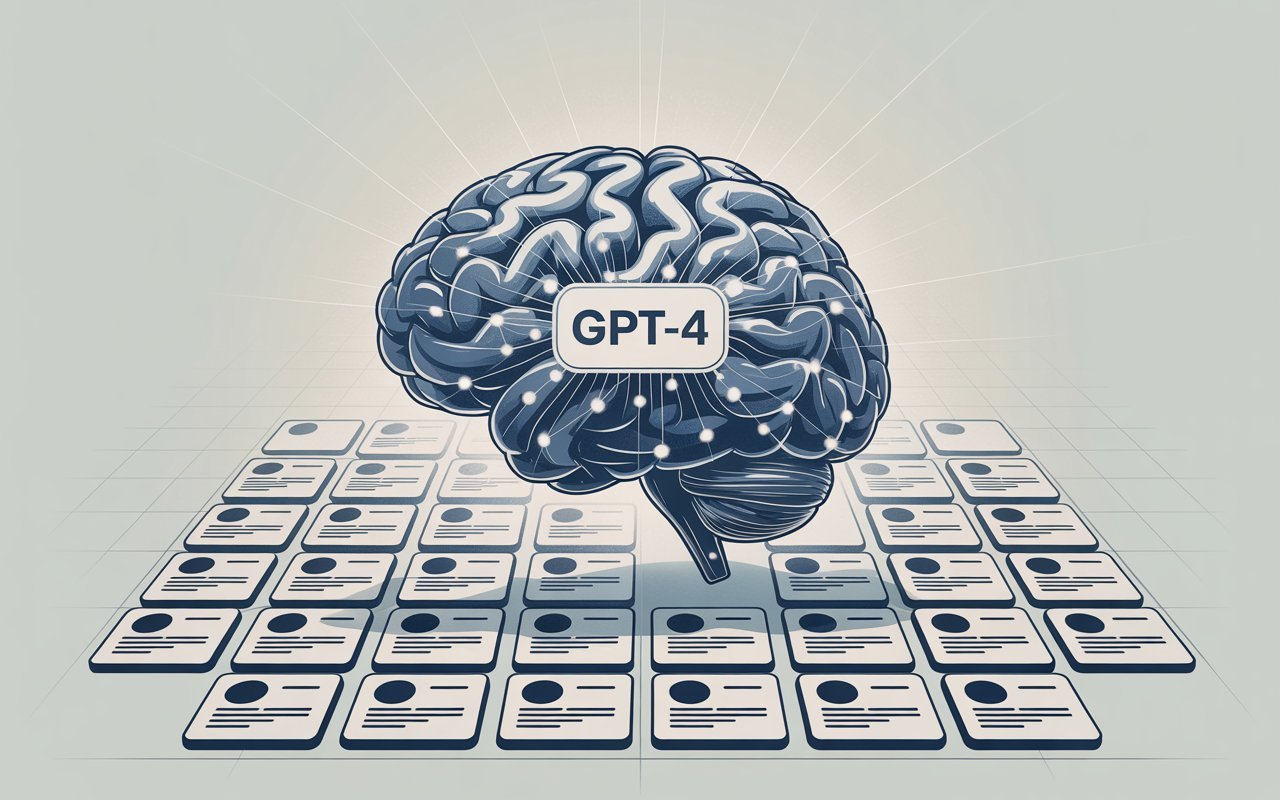
Conventional SEO strategies are no longer sufficient to stay ahead these days. With the advancement of Large Language Models (LLMs) like GPT-4, Gemini, and Claude, content is now being analysed not just by keyword-matching algorithms but by models that understand the context, structure, and intent of your content. At RevoluteX Digital, we believe comprehending how LLMs interpret content is crucial for modern SEO success. This article focuses on how these models process web content and what that indicates for structuring your information in the age of AI search.
What Are Large Language Models (LLMs)?
LLMs are AI systems trained on extensive amounts of text from across the internet. Their immediate role is to understand, generate, and respond to natural language. Unlike traditional algorithms that concentrate on matching keywords, LLMs are competent in understanding:
- Semantic meaning
- User intent
- Content quality and coherence
- Relevance to a topic or question
This indicates when users ask queries in natural language—like “What’s the best time to post on Instagram for engagement?”—LLMs can parse through content and extract the most contextually relevant, clearly explained answers.
Why Does This Matter for SEO and Digital Marketing?
Google and other platforms are rapidly combining LLMs into their search engines. With features like Google’s Search Generative Experience (SGE) and AI Overviews, the search engine no longer just shows links – it’s summarizing and responding to queries directly. If your content is well-structured, there’s a maximum chance that LLMs will pull your information into these summaries, driving increased visibility, engagement, and conversions.
How Do LLMs Read and Understand Web Content?
Comprehending how LLMs “read” your content will assist you in formatting your information for full discoverability. Here are the fundamental methods they interpret content:
Context Over Keywords
Although keywords still count, LLMs prioritize context. For instance, if your content is about “local SEO for cafes in Shawnee, KS,” the model will look for supporting paragraphs, affiliated entities, and real-life examples—not just keyword density.
Structure and Hierarchy
LLMs heavily lean on structured content. This includes:
- Headings (H1, H2, H3): Helps the model steer the hierarchy of your page
- Bullet points and numbered lists: Effortlessly digestible formats
- Short paragraphs: Easier to parse than dense blocks of text
- Tables and data: Useful for presenting structured comparisons
Semantic Relationships
LLMs utilize semantic analysis to understand how terms relate to each other. For illustration, if you’re discussing “on-page SEO,” mentioning title tags, meta descriptions, and internal linking boosts the model’s confidence in your authority on the matter.
Answer Extraction
Models are trained to find precise answers to user questions. If you present information in FAQ-style formats, how-to steps, or clear definitions, your content has a better probability of being picked for featured snippets or AI-generated answers.
How To Structure Content for AI Search Success
At Revolute X Digital, we guide our customers to align their content not just for human readers—but for AI models that now power modern search. Here’s how you can do the exact:
Start with a Clear Topic and Intent
Before writing, ask: What is the primary query or need this content solves? Keep your main keyword focused, but build around it using LSI (Latent Semantic Indexing) keywords and related phrases.
Example:
If your main keyword is “E-commerce SEO Shawnee,KS” supporting topics might be:
- Shopify SEO optimization
- Mobile-friendly design
- Local SEO strategies for USA stores
Use Strategic Headings
Split content using H1, H2, H3 tags. Each section should answer a sub-question related to your subject.
Bad example:
“Other things you should learn”
Better:
“How Mobile Optimization Improves Digital Marketing Agency in Kansas City”
Answer Questions Clearly and Early
LLMs often look for direct answers early in a section. Use concise, informative sentences, particularly after a heading or question.
Example:
What is on-page SEO?
On-page SEO refers to the method of optimizing individual web pages to rank higher in SERPs. It involves title tags, meta descriptions, headers, and keyword placement.
Use Lists and Tables
Organized formats like bullet points and tables are easy for AI models to scan and summarize.
Example: Benefits of Technical SEO
- Faster load times
- Better crawlability
- Improved mobile experience
- Secure (HTTPS) browsing
Include Internal Links and Sources
LLMs evaluate the authority and completeness of your content. Connecting to related pages and external credible sources and citing data boosts your content’s dependability.
Optimizing for AI Search: Dos and Don’ts
Dos
- Use FAQs near the end of articles
- Include step-by-step instructions
- Keep vocabulary easy and conversational
- Use schema markup (FAQ, HowTo, Article)
- Align tone with your target audience
Don’ts
- Overstuff keywords or use outdated SEO tricks
- Write long, unbroken paragraphs
- Use vague or generic subheadings
- Neglect the significance of user experience (UX)
Real-World Example: AI Search vs Traditional Search
Let’s consider the difference between the two pages on “Digital Marketing Strategies for Small Firms.”
- Traditional SEO Page: Uses keyword stuffing, dense paragraphs, no headers
- AI-Optimized Page: Uses headings like “Top 5 Approaches,” lists, examples, and FAQs, and supports each point with explanations
Here, the second one has the maximum chance to get selected by Google’s AI-generated answer box.
The Future of SEO Is AI-Aware Content
Search is transforming. As AI models continue to dominate how people find information online, your content must grow to keep up. This doesn’t mean tossing out what works—but improving your approach with AI-friendly formatting, semantic depth, and user-focused answers.
RevoluteX Digital seeks to help businesses in USA and beyond adapt to this new landscape of AI search. Whether you are a local business striving for better visibility or a digital brand competing around the globe, we offer bespoke SEO strategies that align with the latest trends in LLM interpretation and generative search.
Final Thoughts
The advancement of LLMs marks a significant change in how search engines process content. By structuring your content with transparency, relevance, and intent, you’ll not only appeal to human readers—but also become the go-to source for AI-driven platforms.
If you need help optimizing your content for AI-powered search engines, reach out to us!
Jason
We are an Affordable Digital Marketing Agency in Shawnee with budget-friendly solutions to amplify your brand. Elevate your business without compromising quality or cost.
